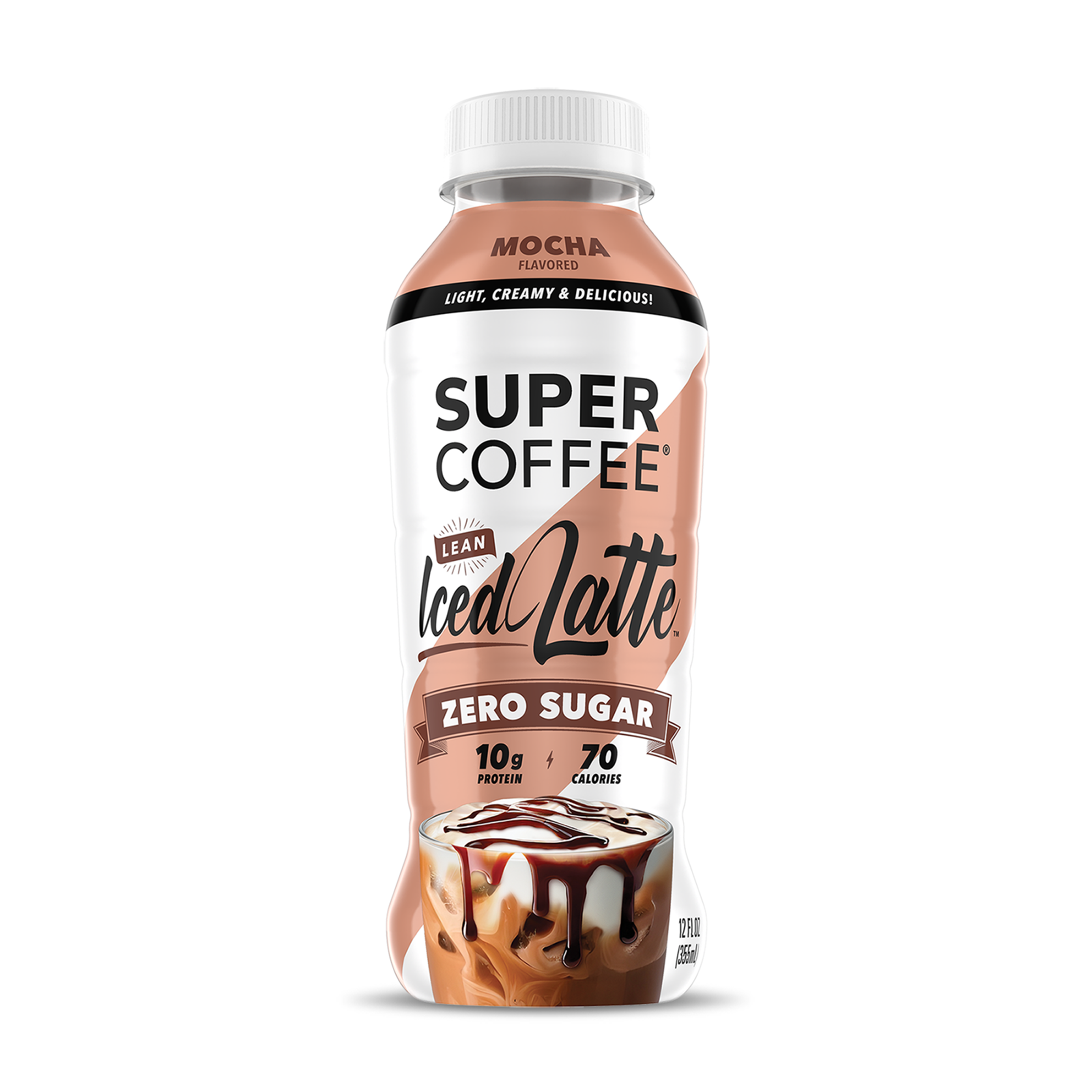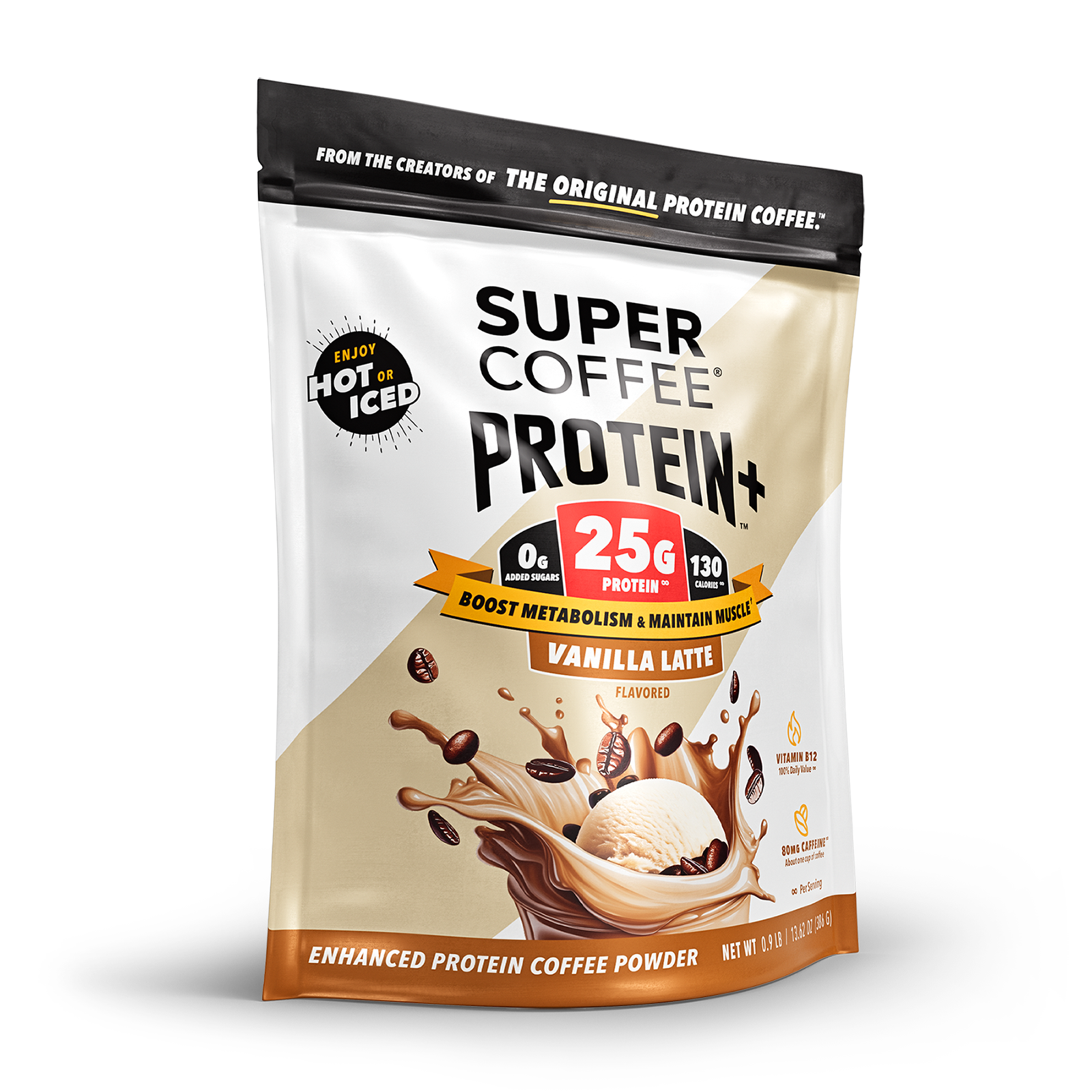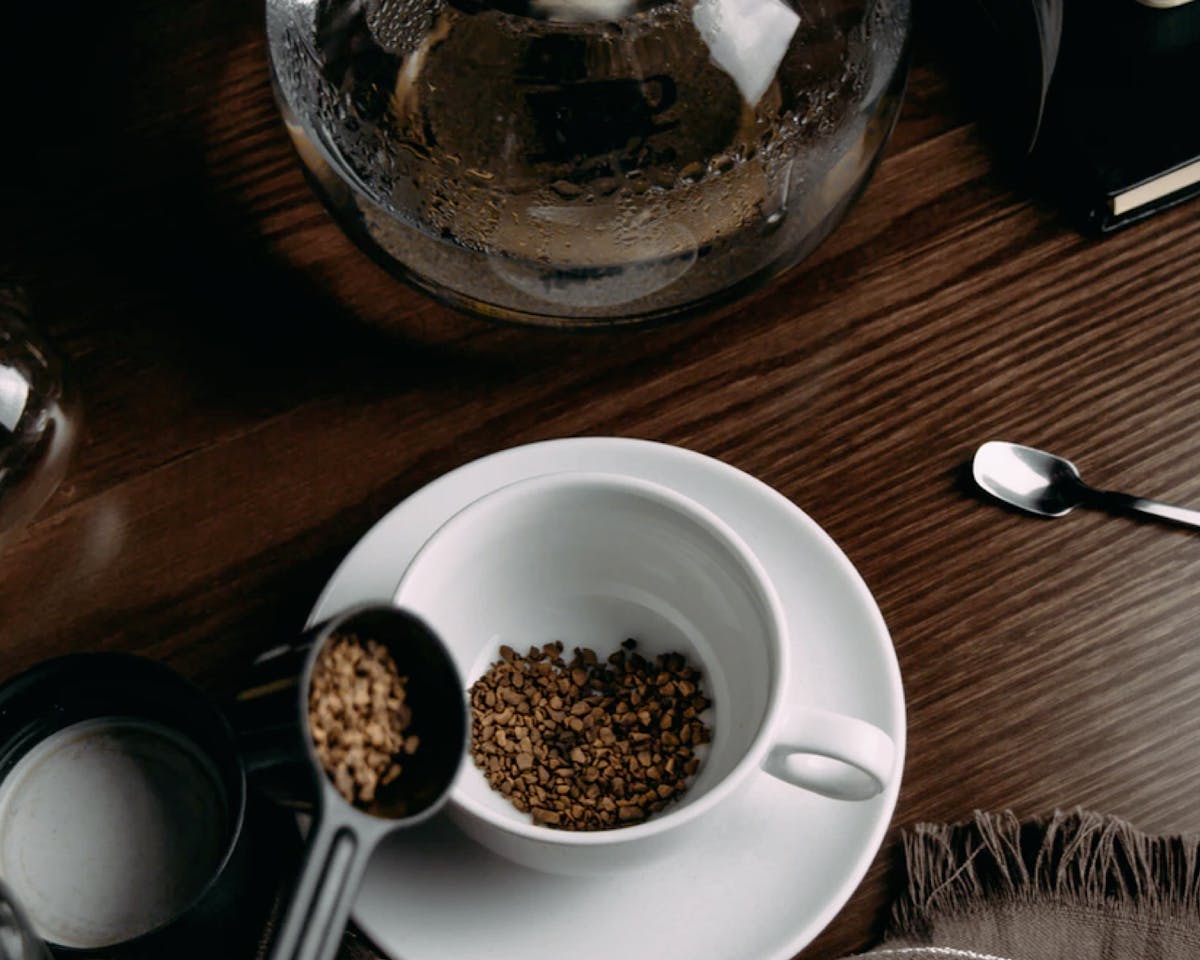Your cart is empty
We all know the tone of voice a self-styled “expert” uses when they deliver their verdict – haughty, disparaging, superior.
From a gourmet: “Oh…it’s American cheese.” From a home brewer: “Oh…it’s Budweiser.” From an oenophile: “Oh…it’s a box wine.”
This last judgment, though, usually doesn’t even come from an “expert”:
“Oh, it’s instant coffee.”
That’s not really fair.
First, instant coffee can be a lifesaver when you’re already late for work or school, or when your mother-in-law shows up unannounced and thirsty.
And second, there are some surprisingly good instant coffees on the market these days.
We can’t do much about the first one, other than encourage you to set the timer on your coffeemaker or post a lookout at the front door.
The second, however? We can definitely help with that.
Here’s our list of the best instant coffee choices you can find. If it makes you curious about how these coffees are produced – and why they’ve gotten so good in recent years – we’ll go into more detail about this kitchen staple after our instant coffee rankings.
Best Instant Coffees
Best Overall Instant Coffee
Mount Hagen Organic Instant Coffee
Starbucks may be the biggest name in coffee these days, but no, the company isn’t at the top of this list.
Mount Hagen is. This instant organic coffee isn’t quite as good as the freshly-brewed stuff you might find at an artisanal coffee house, but it’s better than almost anything else you’d buy freshly-brewed. It’s a medium-roast made from 100% Arabica beans with a rich and bold flavor, not bitter but not too acidic either. As a fairy-tale bear might say, it’s just right.
Mount Hagen has a great track record; the company produced the world’s first certified organic instant coffee. It’s impossible to know if the taste of this coffee is at least partially due to the fact that the beans are organically-grown and sourced from a small number of highland farms, but it certainly doesn’t hurt – although it does contribute to Mount Hagen instant coffee’s relatively-high price. This coffee is available in both jars and boxes of individual packets. One other note: Mount Hagen is a fair-trade product.
Oh, we should mention that Mount Hagen also produces a tasty instant decaf coffee.
Canyon Coffee
Did someone say expensive? They might have been thinking of Canyon Coffee instant coffee, which comes in single-serve packets that cost about $3.50 apiece – certainly on a par with what you’d pay at a Starbucks store, but very pricey for the instant stuff.
That doesn’t mean you shouldn’t try it; you might very well decide that the premium price they charge for this single-origin coffee is worth it. The hand-picked beans come from southern Ethiopia, one of the world’s most revered coffee-producing areas (the company produces other coffees sourced from Colombia). The final product is a freeze-dried medium roast that’s complex yet nicely-balanced; it’s the type of cup that makes you want a second – if you can afford it.
Almost as Good
Joe Coffee Daily House Blend
This one is almost as expensive as Canyon Coffee’s instant, and as our heading says, almost as good. Joe Coffee roasts its beans in Brooklyn for its chain of specialty coffee shops in New York, and has now expanded to sell their at-home products through other retailers and on Amazon.
The Daily House Blend is easy-to-drink and slightly sweet (with some discernable cola and chocolate notes); it’s an approachable medium-roast which is sold in a box of six instant coffee packets. It’s a good choice for use at home, but perhaps even better as a splurge for coffee drinkers who love camping – since all you need is a couple of packets and somewhere to make hot water after a day spent in the great outdoors. (Yes, Joe Coffee can make a very nice iced coffee as well, if you only have access to cold water.)
Waka Coffee Quality Instant Coffee
We always hesitate a bit when a company has to put “Quality” into its name, but Waka Coffee quickly erased any doubts we had with this smooth blend. It’s a 100% Colombian Arabica medium roast (they also offer an Indian light roast), not overly complex but bright and pleasantly sweet with citrus notes. There’s a decaf option as well, which is quite good but not quite as sweet.
The Waka instant coffee crystals are sold in 3½ ounce packages and single-serving packets, at prices much more affordable than any of the other choices we’ve listed so far.
Starbucks VIA Instant French Roast
OK, here’s the first dark roast on our rundown, and it’s not for everyone. Starbucks’ VIA instant coffee isn’t just strong, it’s strong. Not only that, but somehow the company has been able to pretty closely reproduce the fresh-brewed coffee flavor of the grande or venti – complete with the bitterness – that your barista would serve you in person.
Our guess at their secret? It’s probably because they put a little real ground coffee mixed into the blend, to compensate for the fact that it’s spray-dried and not freeze-dried; you may find some at the bottom of your cup when you make this instant coffee. If you’re not a dedicated dark roast fan, some creamer or sugar might be a good idea.
This VIA dark roast isn’t for everyone, but Starbucks also makes an instant Italian roast with more sweetness, an instant house blend based on their original in-store blend, and several different lattes (including a tasty white mocha latte). All versions are sold in surprisingly reasonably-priced single-serve packets.
Douwe Egberts Pure Gold Instant Coffee
Thank the Dutch for this nice medium-roast instant coffee; it’s produced in Netherlands (which is home to a huge number of serious coffee drinkers), sold for a decent price, and even available in some grocery stores. Pure Gold’s blend of Arabica beans produces a strong aroma that quite doesn’t prepare you for the smooth, somewhat light taste of the coffee. If you’re looking for a more powerful instant without paying for VIA, Douwe Egberts Pure Indulgence is worth a try.
Best Specialty Instant Coffees
Espresso: Medaglia D’Oro
You caught us. You can’t find espresso crystals that can be blended with water to make anything like the real thing. But espresso powder, added to desserts or grilled meals, makes them something special – and the rich flavor of Medaglia D’Oro’s espresso powder comes the closest to reproducing the flavor and aroma you expect.
Alternative Coffee: Four Sigmatic Mushroom Coffee
Yes, it’s instant. Is it really coffee? You be the judge. Four Sigmatic’s organic instant coffee is made with so-called adaptogenic mushrooms, finely ground and mixed with 100% Arabica coffee. What are adaptogenic mushrooms? They’re mushrooms species like chaga, lion’s mane and cordyceps, which provide even more health benefits than ordinary mushrooms; that’s why this coffee is often called a superfood. What does it taste like? Actually, the coffee flavor predominates, with just a bit of an earthy tang contributed by the mushrooms – it’s good, and good for you. It has half the caffeine of standard coffee, too.
Ready-to-Drink Coffee: Super Coffee
When you walk by the refrigerated coffee drinks (or the canned ones) at your local store, you probably don’t think of them as instant coffee. But let’s consider the issue for a moment. If they’re ready to drink the instant you open them, and they’re coffee – doesn’t that really make them instant coffee? Yes. Yes, it does.
And the best of the bunch isn’t the Starbucks bottled coffee you can pick up just about anywhere. It’s Super Coffee, a brand that takes a new and refreshing approach to bottled brews.
Super Coffee is made from carefully-selected organic Colombian Arabica beans, so the pedigree is certainly right. What makes this bottled coffee different is that it is sugar- and lactose-free, there’s only one carb but 10 grams of protein, and it has higher-than-usual caffeine levels. What’s the secret? This coffee contains MCT coconut oil for added health benefits, monk fruit sweetener instead of sugar, and whey protein to make it creamy. All that, and all four of its flavors happen to be yummy. Super Coffee may make you reconsider your feelings about instant coffee, especially if you’re into keto eating.
Other Instant Coffees
You’ll notice that we didn’t include the brands you can pick up at your local supermarket without a hassle. Brands like Folgers Classic Roast and Taster’s Choice House Blend (Taster’s Choice is actually owned by Nescafé) are fine, but you’ll almost definitely realize after your first sip that they’re not coffee – they’re “instant coffee.” That’s why they didn’t make this list.
Why Instant Coffee Is No Longer a Punch Line
“Why do French politicians only drink instant coffee?” “Because they hate the French press.”
We’ve got a million of them – and we’re not alone. But at least silly jokes are inoffensive. Most jokes about instant coffee are aimed directly at the person who’s supposedly so clueless that they actually drink instant coffee.
It’s easy to understand why instant coffee was a punch line for so long: its quality used to range from mediocre to absolutely terrible.
That’s not true anymore. To understand why, let’s take a brief look at the history of instant coffee.
The Birth of Instant Coffee
Instant coffee hasn’t been around forever. It just seems that way.
There’s lots of quibbling about the origins of instant coffee, and most accounts say the granulated stuff was first created in the late 19th century. They point to a concentrated coffee-and-chicory syrup known as Camp Coffee which was originally created as an instant coffee for British troops in the 1880s, and a French patent for instant coffee issued to Alphonse Allais around the same time.
Other historians give the credit to David Strang, who received a New Zealand patent for his “dry hot-air” process of making instant coffee in 1890, or Japanese chemist Satori Kato, who invented a method used to create “stable” instant coffee while working in Chicago – and showed it to the world at the 1901 Pan-American Exposition.
It’s been around for longer than that, however. A British patent for instant coffee, described as a “coffee compound,” was issued to John Dring in 1771. And a version of instant coffee, molded in the form of a cake, was developed in the 1850s and put into soldiers’ rations during the Civil War. They hated it.
All of those attempts to create instant coffee were theoretical or small-scale. It wasn’t until 1910 that the American inventor George Constant Louis Washington actually began to create and sell instant coffee commercially through his G. Washington Coffee Company. It caught on quickly, particularly because he sold it to the U.S. military for use in the field during World War One.
When “the boys came home,” they spread the word about what they called their “morning cup of George” and instant coffee became a hit – making Washington and his coffee, renamed “Red E Coffee,” a millionaire.
Instant Coffee Goes Mainstream
Washington’s coffee was rather similar to the instant coffee we’re all familiar with today, but it’s been refined over time. Nestlé came up with the first major advance, and surprisingly, it was because of a request for help from Brazil. That country’s coffee producers had an enormous surplus after the 1929 stock market crash. It was starting to spoil, and existing methods of turning it into instant coffee weren’t satisfactory.
Here’s what Nestlé came up with. They mixed coffee extract with soluble carbohydrates and dried them together; the carbs helped stabilize the mixture and improved the flavor – and the company’s landmark Nescafé brand was launched. Once again, soldiers helped spread the word, since Nescafé was included with World War II rations. When they came home, sales of Nescafé soared.
In 1954, Nestlé figured out a way to make their instant coffee without the added carbs. Then in 1965, the company found a way to create crystallized instant coffee. They did it by using the new “freeze-drying” technology: ground coffee is brewed in water, concentrated, frozen to -50 C°, broken up and dried. This version of Nescafé, Nescafé Gold, also tasted much, much better – almost like the real thing. (Fun fact: freeze-drying was first used by Minute Maid to make orange juice concentrate; the name “Minute Maid” was chosen because freeze-drying meant that a gallon of juice could be “made” in one minute.)
Other major instant coffee producers gradually followed suit, switching their output from powder to coffee crystals or granules. Sixty years later, the same basic process is still used to produce instant coffee.
Instant Coffee’s Rise and Fall
In the ‘50s, ‘60s and early ‘70s, instant coffee was the staple in most homes. The reason is simple: countertop drip coffee makers, as we know them today, didn’t exist yet. To brew coffee at home, most people had to use an unwieldy machine called a percolator, which was known for turning out strong and bitter brew, and requiring lots of time to do its work. Wanted a quick cup of coffee before leaving for work? For most folks, instant was the only choice.
In fact, almost one-third of the coffee imported to America in the 1970s was used to make instant coffee. But that was the peak of the product’s popularity. In the ‘80s and ‘90s, vastly-improved home coffee makers proliferated, and consumers’ exposure to high-end coffee shops and coffeehouses increased demand for high-quality, fresh-brewed coffee – or at the very least, instant coffee that tasted like it.
Today, instant coffee accounts for only about 7% of American coffee consumption and 10% worldwide. It remains popular in Britain, though, where more than three-quarters of the coffee consumed at home is still instant.
The decline in instant coffee’s popularity would imply that fresh-brewed coffee is simply better than instant, and that’s largely true. However, it’s not true that instant coffee can’t taste good. Some of it is excellent, and we’ve highlighted some of the brands to check out at the top of this page.
Then why doesn’t most instant coffee taste as good as regular coffee?
It’s primarily because of the way that instant coffee is made.
The Instant Coffee Manufacturing Process
We’ve already told you that the freeze-dried process used to make instant coffee in the last part of the 20th century is still being used today. That’s because there’s nothing inherently wrong with the process; it can do a good job of preserving the taste, flavor and consistency of roasted coffee.
Two other issues are to blame: the beans that are used to make instant coffee, and cost-saving production methods.
Let’s talk coffee beans first. As you undoubtedly know, Arabica beans produce the best coffee. It’s sweeter, more acidic, and more complex. Arabica beans, however, are also more expensive – so most instant coffee producers choose to use cheaper Robusta beans which create a harsher, grainier, lower-quality coffee with a lot more caffeine.
Coffee can only be as good as the beans it’s brewed from, so assembly-line instant coffee made from Robusta beans will never be as good as instant made from Arabica beans.
Here’s the second issue, and it’s also cost-based.
The freeze-drying process that’s still used in the industry can create very good instant coffee. It’s much more expensive, though, since it requires special equipment that can freeze the concentrated slurry to extremely low temperatures, subject the product to high pressure, and then dry it properly in a two-step process. Freeze-drying is also is quite time-consuming.
That’s why many companies use an economical “spray drying” process instead. They simply spray the concentrated coffee slurry into a hot air chamber where it quickly dries into crystals. Spray drying is cheaper, but it comes with a huge quality price: many of the coffee’s natural oils – which determine its taste – are lost in the process. That’s why instant coffee often tastes less flavorful.
You certainly can buy instant coffee that’s been freeze-dried and not spray-dried, and there are some instant coffee brands made from Arabica instead of Robusta beans. That’s a good starting point, when you’re looking for the best instant coffee.
A better starting point is to check out our rankings at the top of this page.
Blog posts
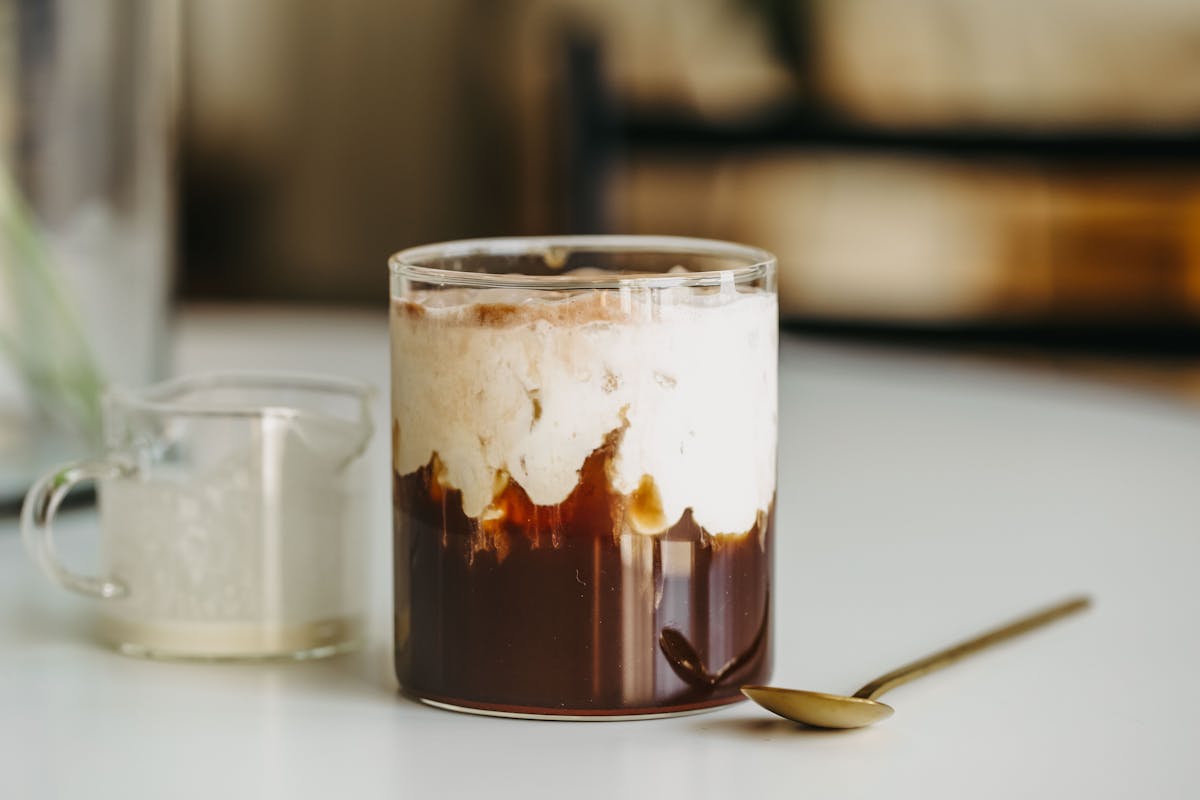
Cold, creamy and delicious - This chocolatey cold brew recipe is the perfect treat to kickstart your morning! The Recipe Chocolate Cream Cold Brew Prep Time: 1 minutes Cook Time: 5 minutes Ingre...
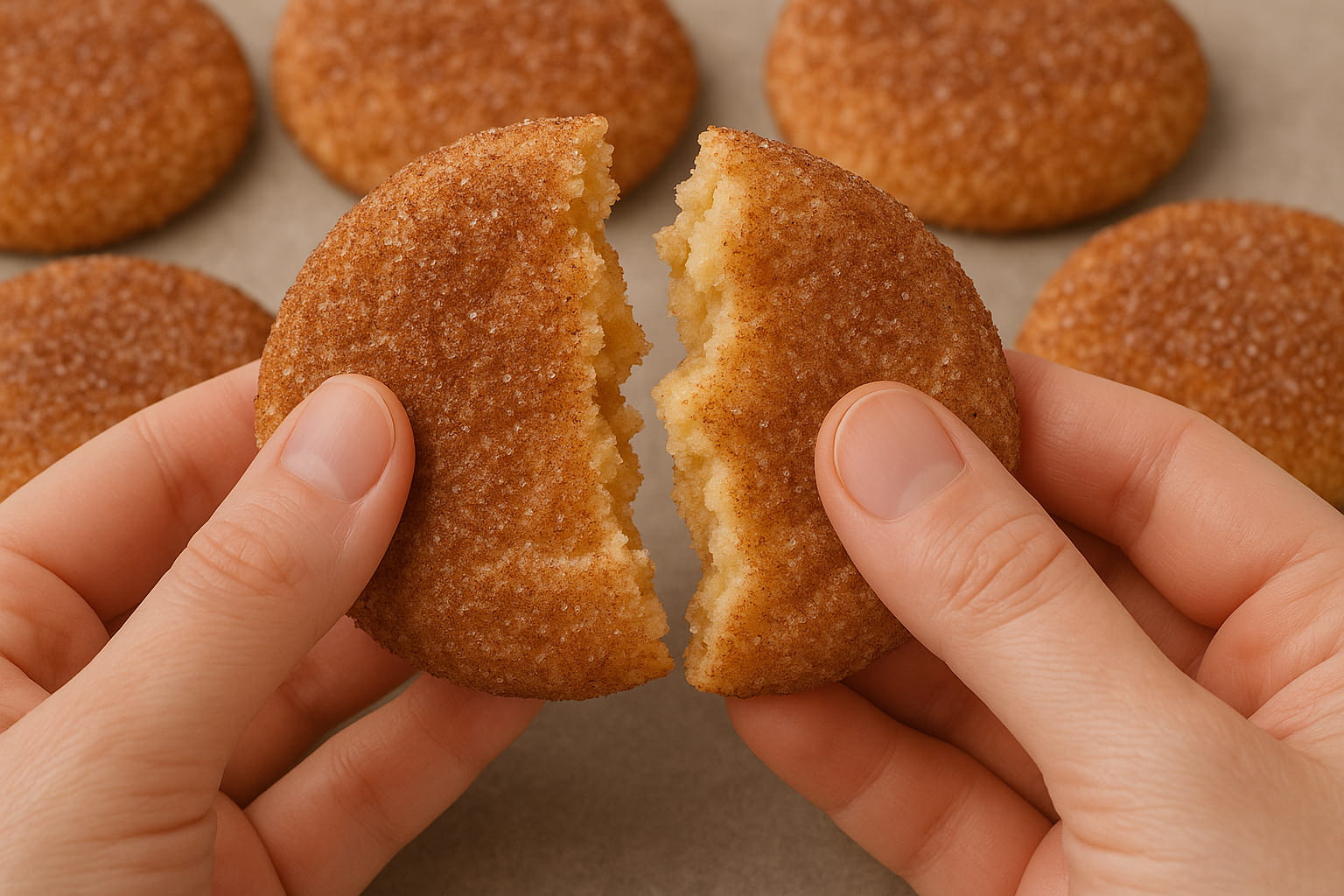
Indulge in the warm embrace of autumn with Pumpkin Spice Snickerdoodles - soft, spiced, and utterly irresistible! The Recipe Pumpkin Spice Snickerdoodles Prep Time: 10 minutes Cook Time: 1 hour ...
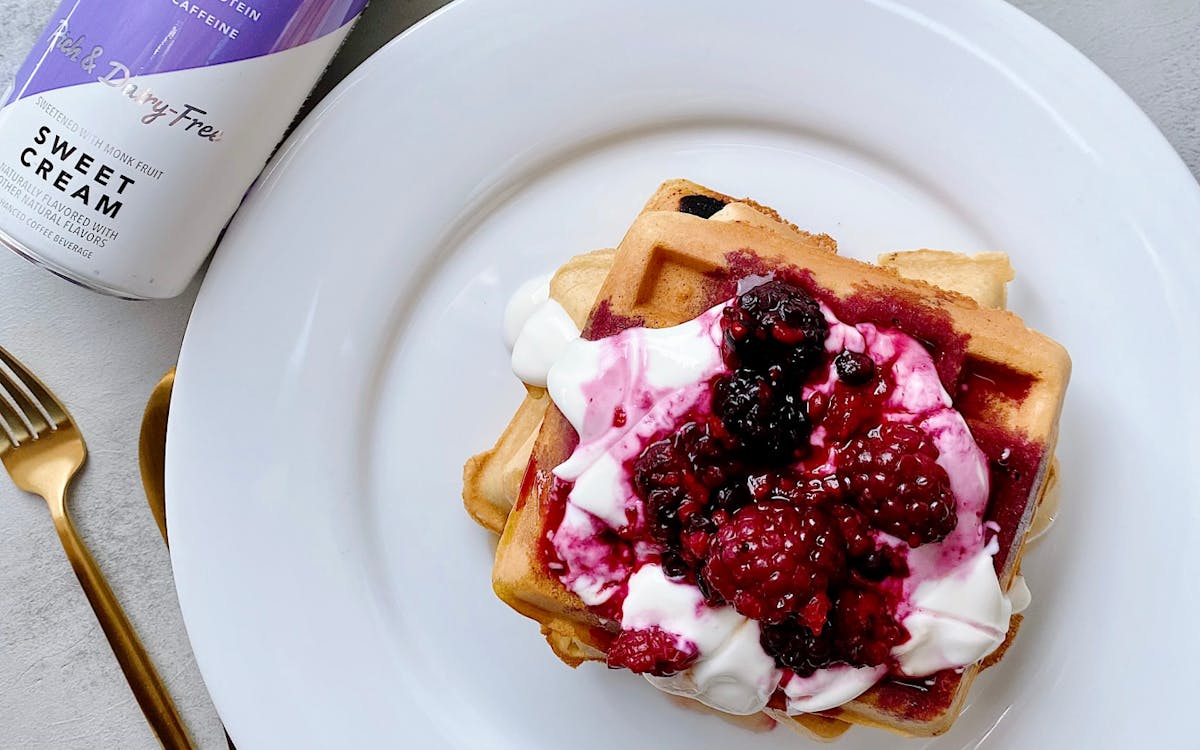
Low Carb Berries & Cream Waffles
These low carb/low sugar waffles are delicious, wonderfully crispy on the outside, and fluffy on the inside. You can also double batch and freeze for easy weekday breakfasts. Featuring our almost-...
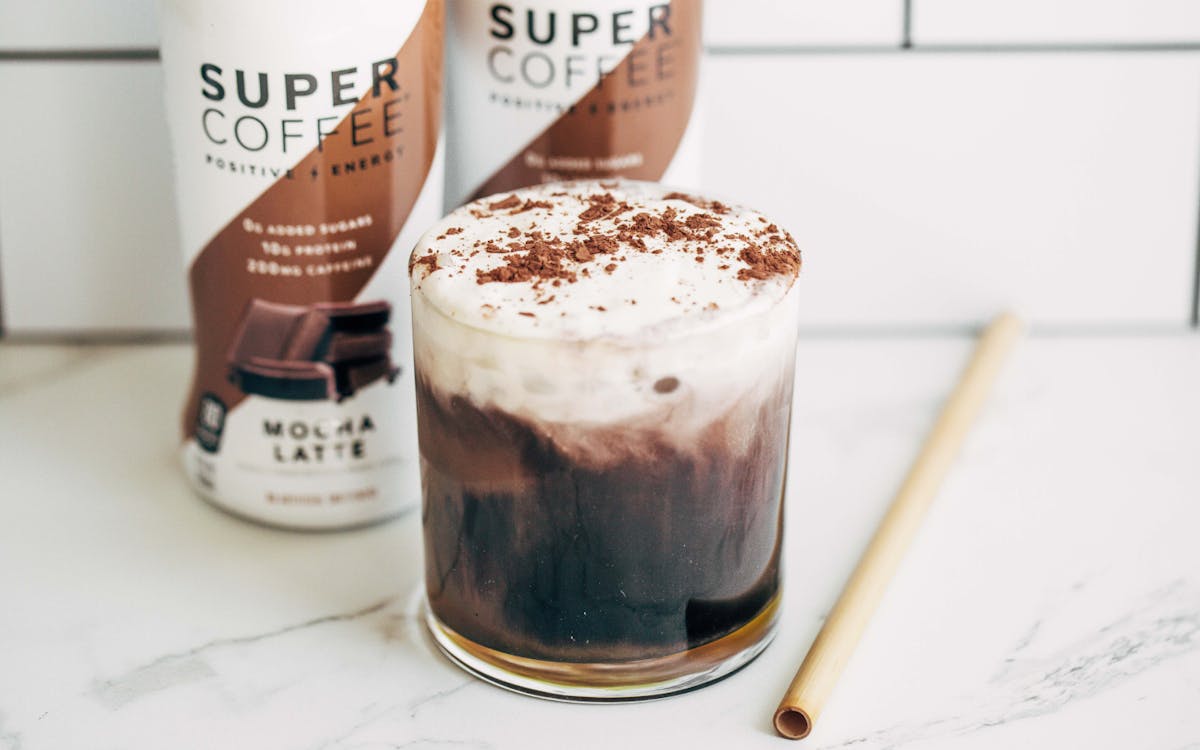
This may be the most fun latte recipe we’ve tried yet! With gooey & decadent black chocolate drizzle and a thick layer of creamy French Vanilla, just one sip of this iced latte will transport ...
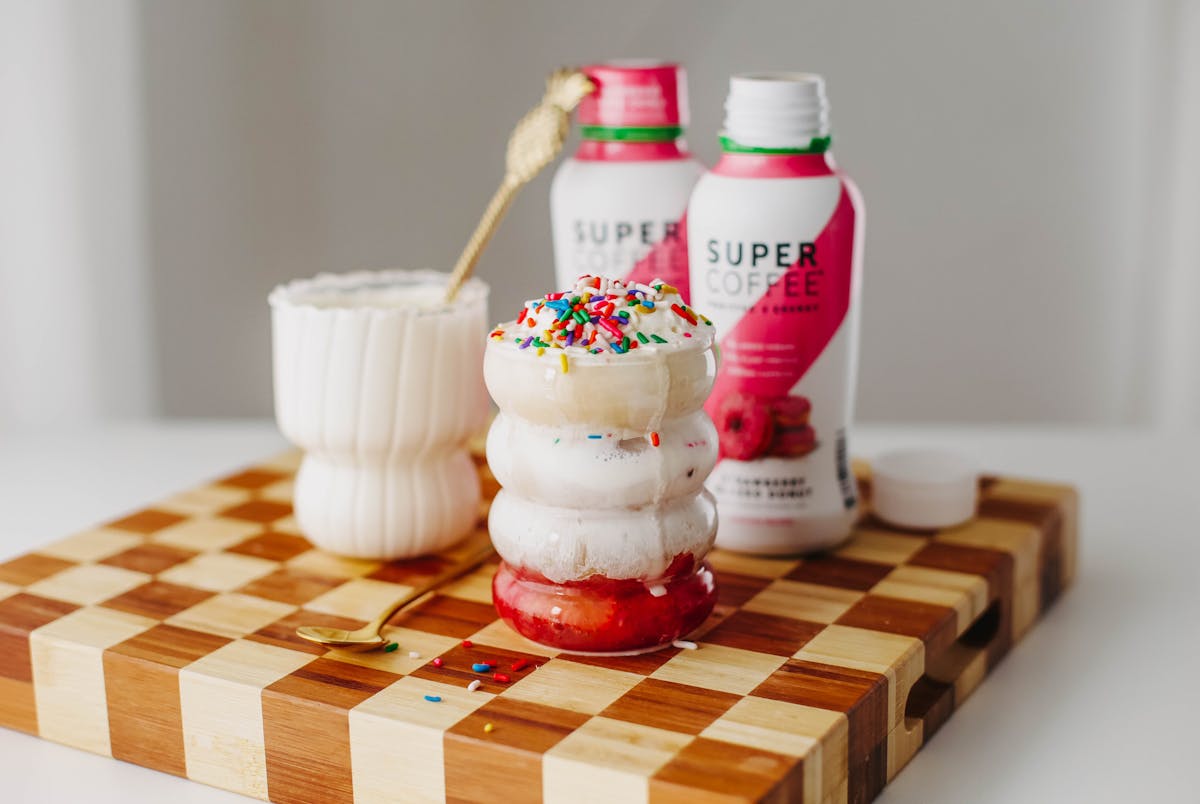
Strawberry Sprinkle Keto Coffee Recipe
Nutritional Info Calories: 274 Fat: 26.7g Carbs: 5.7g Protein: 4.5g Sugar: 2.1g Ingredients 3 strawberries, sliced. 3-4 tbsp heavy cream or half & half. Enough ice to fill a glass. 1/2 cup S...
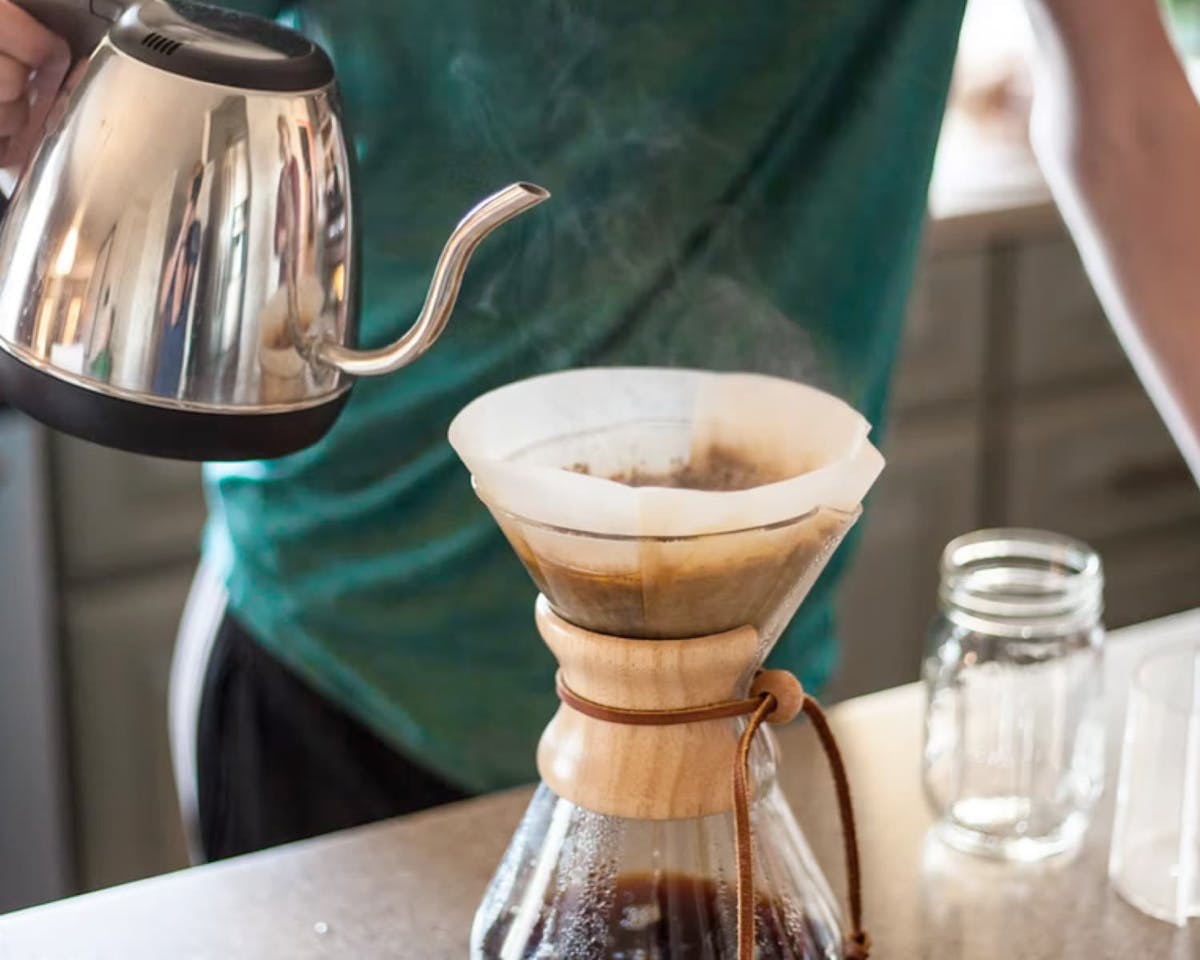
8 Healthy Coffee Recipes That Are Better Than Starbucks
There’s no question about it. Coffee is good for you. Those who don’t like black coffee, of course, commonly add milk, cream and sugar – even if that also means adding calories, fat or carbs to the...



